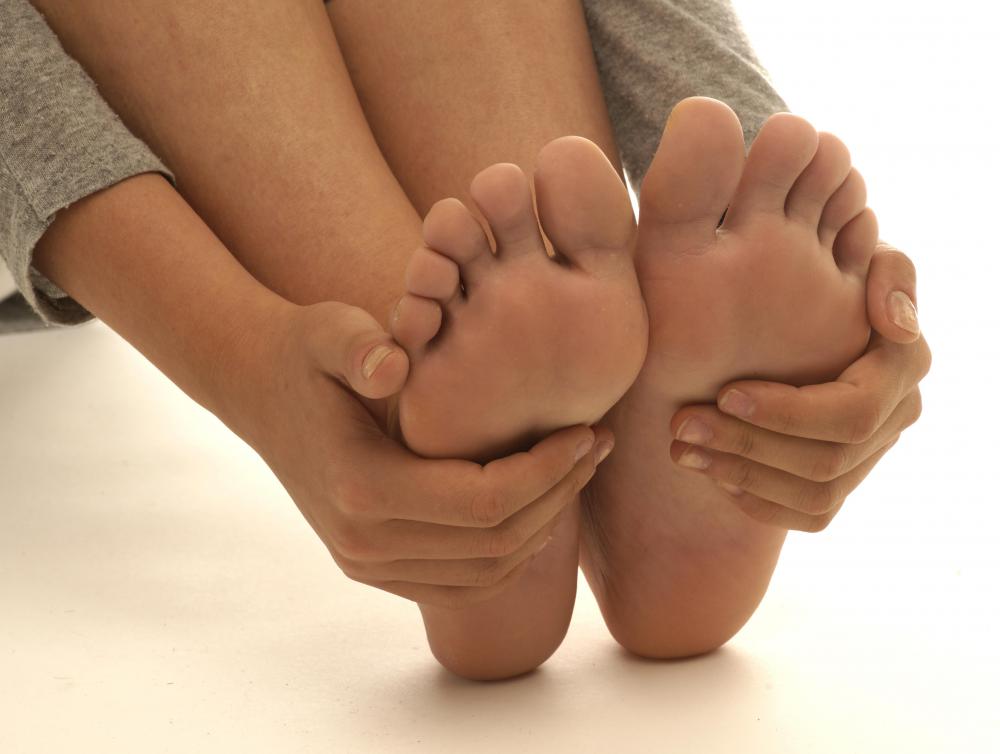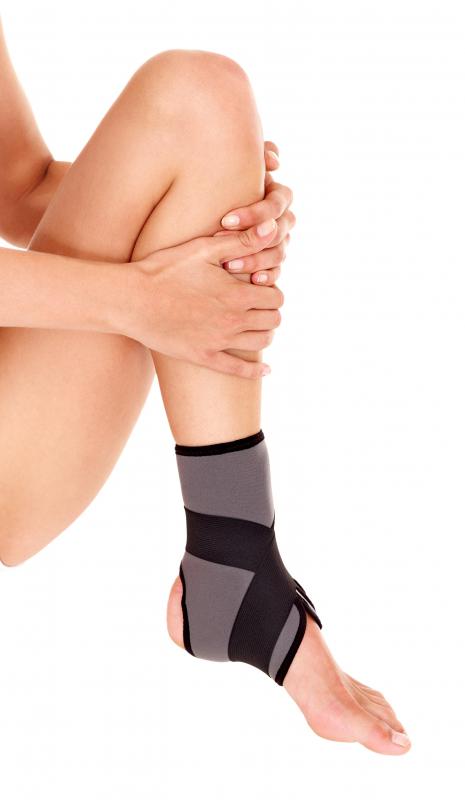At WiseGEEK, we're committed to delivering accurate, trustworthy information. Our expert-authored content is rigorously fact-checked and sourced from credible authorities. Discover how we uphold the highest standards in providing you with reliable knowledge.
What Is the Plantar Plate?
The plantar plate is the short ligament running along the first joint of each toe and is located on the plantar side, or underside, of the foot. These ligaments are tethered between the farthest portion of the metatarsals and the toes. Functioning to buttress the foot, especially during walking or running, the plantar plate bears a great deal of stress and is susceptible to damage. Other names for this part of the foot are the volar plate, volar ligament or plantar ligament.
Structural support for the front part of the foot is provided by the metatarsals, or the five thin bones running between the ankle and the toe bones, as well as the five toe bones, called the phalanges. The plantar ligament acts as a supporting cable for this part of the foot, running across the five metatarsophalangeal (MTP) joints, between the metatarsal bones and the phalangeal bones. Here, the business of the plantar plate is to hinder the MTP joints from bending upward beyond the normal range of motion. In addition, the plantar ligament acts to stabilize this part of the foot, preventing the toes from drifting out of their normal alignment.

During walking or running, the toes are naturally flexed upward while the entire weight of the body is relayed across the bones and the plantar plate. The concentration of the entire body weight onto these relatively small structures make the plantar ligament prone to damage. Deterioration of the plantar ligament is often caused by overuse during physical training, the stress of carrying an overweight body, or by wearing high heeled shoes which lock the MTP joint in the flexed position. Damage to the plantar plate can be chronic and include lengthening of the ligament or a partial tear of the ligament. The most serious form of plantar plate injury is a total rupture of the plate, or when the ligament tears completely apart, leaving no link between the metatarsal and phalangeal bones.

Tears or ruptures of the plantar ligament are diagnosed with an ultrasound review or magnetic resonance imaging. The problem may also be evaluated using a revised Lachman test, an orthopedic assessment typically used for knee injuries. During this test, the damaged toe is gently manipulated to see if it can be fractionally dislocated, or partially pulled from the joint, or completely dislocated. Minor tears or elongation of the plantar ligament are usually treated with immobilization and support of the MTP joint with a foot brace. Complete tears almost always require surgery.
AS FEATURED ON:
AS FEATURED ON:














Discuss this Article
Post your comments